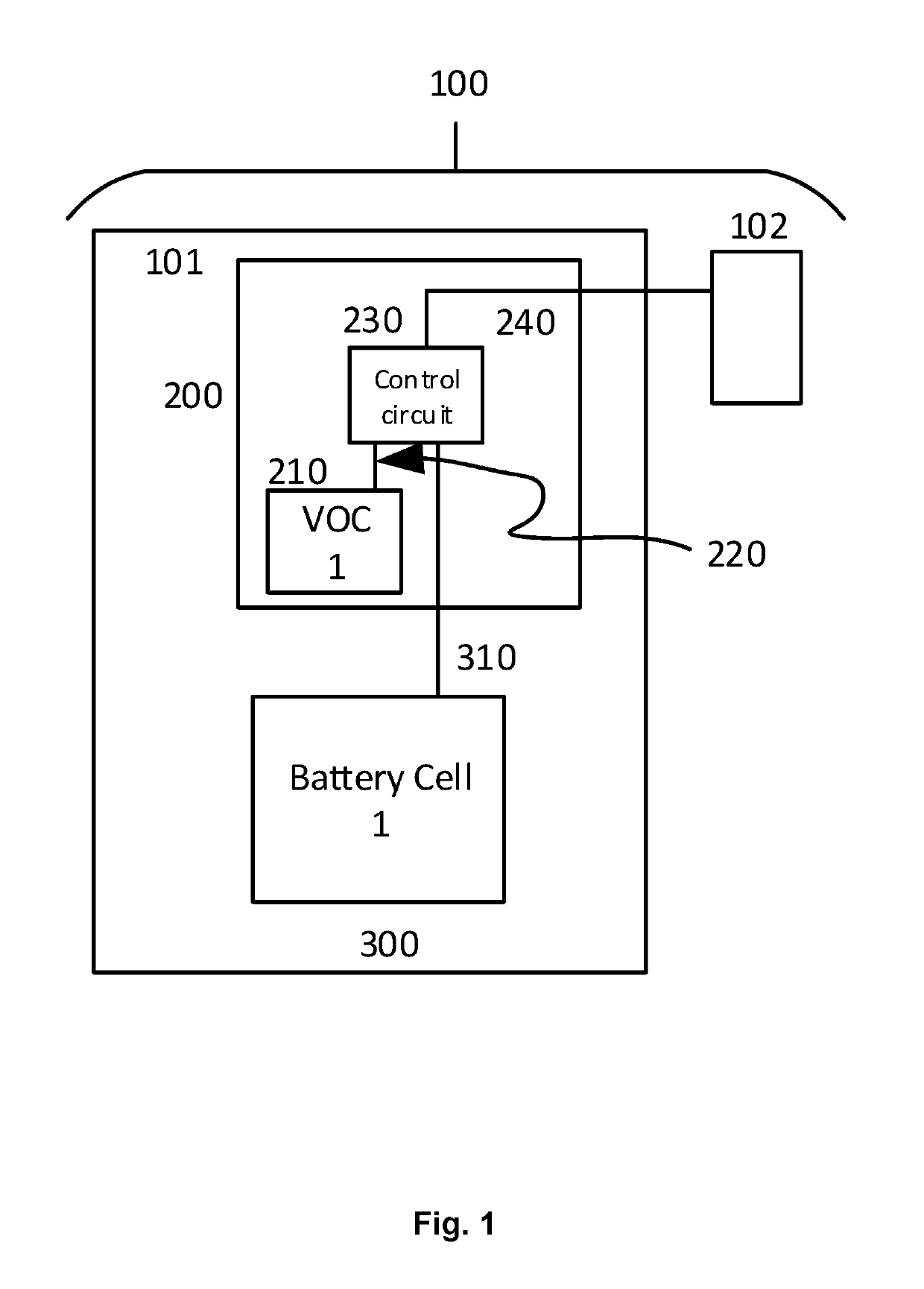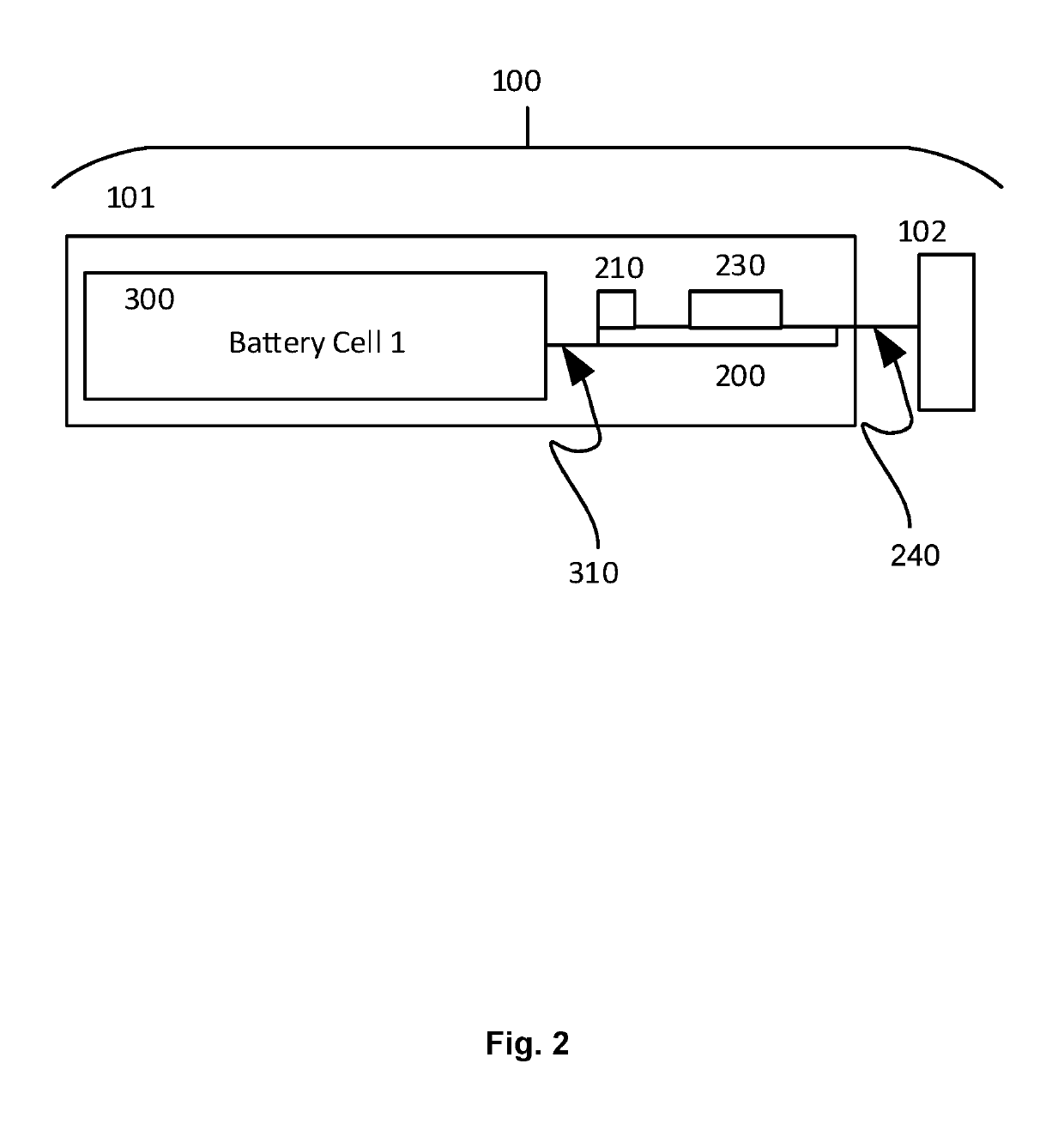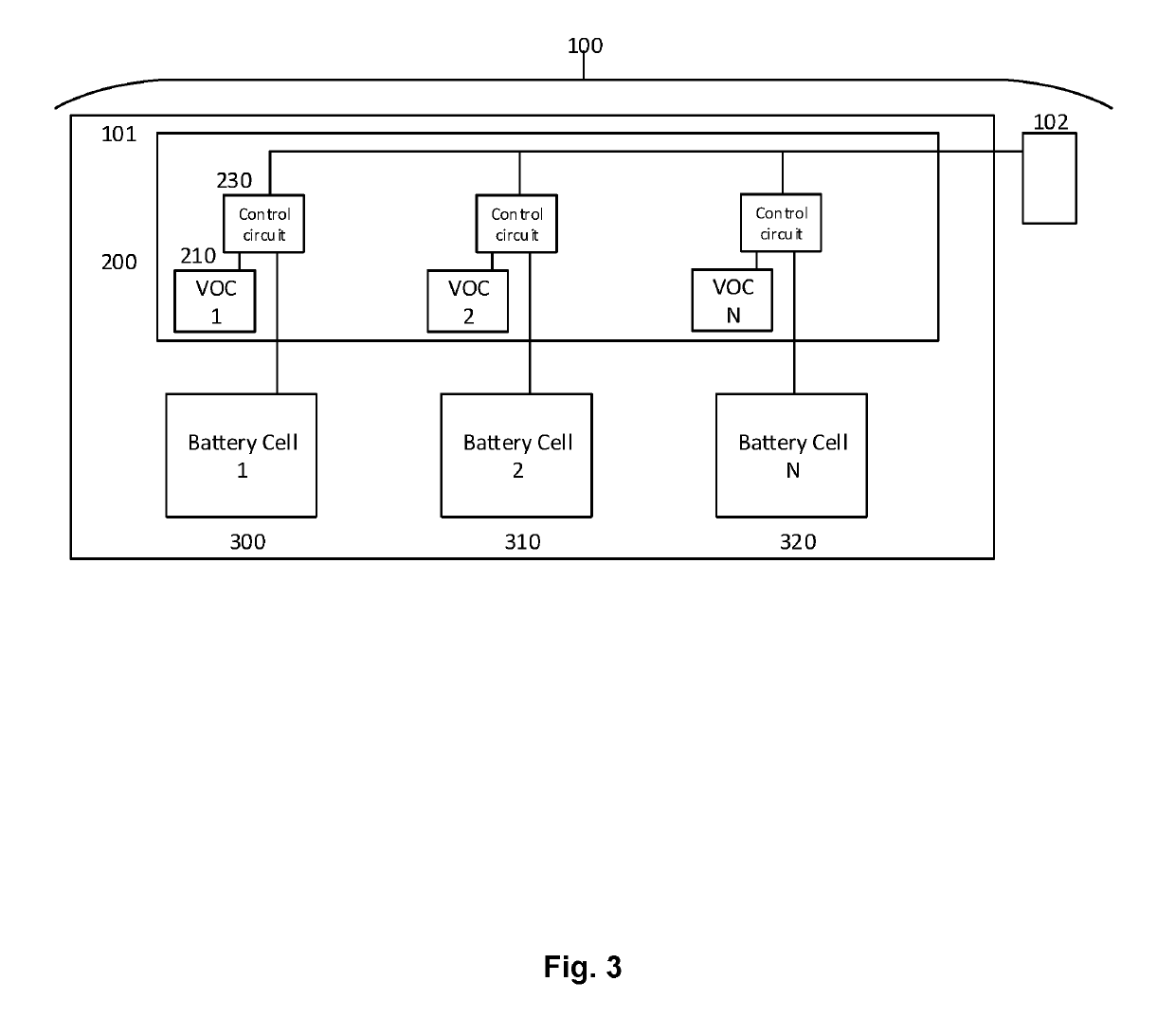Method and System for Detecting Volatile Organic Compounds within a Battery Assembly
a battery and volatile organic technology, applied in secondary cell servicing/maintenance, batteries, instruments, etc., can solve the problems of li-ion batteries, notable failures in lithium-ion chemistry, damage and death, etc., and achieve the effect of minimizing the hazard
- Summary
- Abstract
- Description
- Claims
- Application Information
AI Technical Summary
Benefits of technology
Problems solved by technology
Method used
Image
Examples
Embodiment Construction
[0017]With reference to FIGS. 1-2, an embodiment incorporates a VOC sensor 210 into any existing rechargeable battery system design providing an additional protection method to minimize the hazard associated with various battery failure mechanisms, resulting in the outgassing of harmful chemicals.
[0018]VOC sensors 210 may be a Total VOC sensor (TVOC), which is a non-selective device that detects a wide variety of VOCs. In an embodiment, the TVOC may have a typical measurement level between 0 and 2000 ppm. The VOC sensor 210 may also be a targeted VOC sensor, which includes a specific correction factor used for sensor calibration. That is, a targeted VOC sensor may be used for a specific chemical, or for a subset of chemicals, and may be calibrated to detect for those particular VOC chemicals. A threshold value is configured for VOC concentration levels. For example, in a three-cell 60 Wh battery assembly, a threshold level may be set to 90 or 100 ppb (parts per billion).
[0019]A batt...
PUM
| Property | Measurement | Unit |
|---|---|---|
| pressure | aaaaa | aaaaa |
| boiling point | aaaaa | aaaaa |
| threshold level | aaaaa | aaaaa |
Abstract
Description
Claims
Application Information
 Login to View More
Login to View More - R&D
- Intellectual Property
- Life Sciences
- Materials
- Tech Scout
- Unparalleled Data Quality
- Higher Quality Content
- 60% Fewer Hallucinations
Browse by: Latest US Patents, China's latest patents, Technical Efficacy Thesaurus, Application Domain, Technology Topic, Popular Technical Reports.
© 2025 PatSnap. All rights reserved.Legal|Privacy policy|Modern Slavery Act Transparency Statement|Sitemap|About US| Contact US: help@patsnap.com



